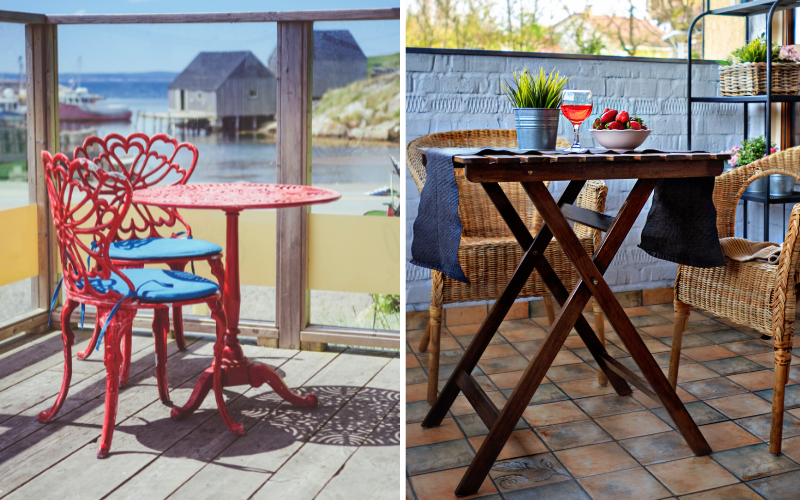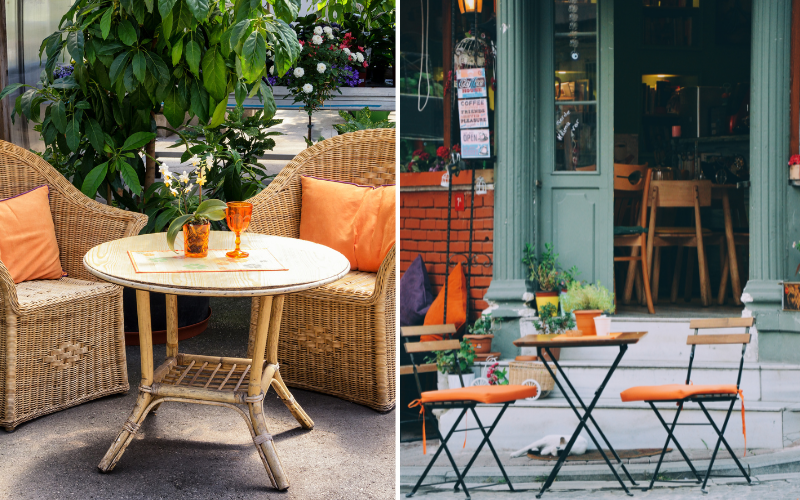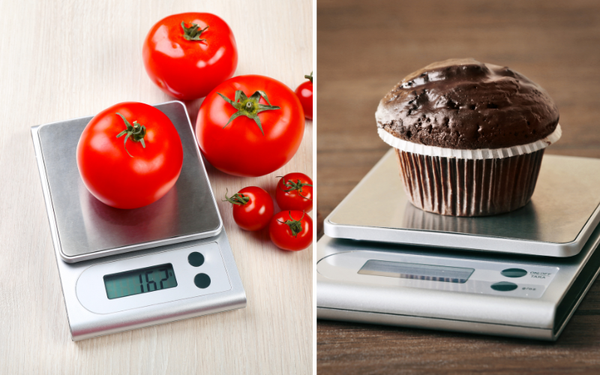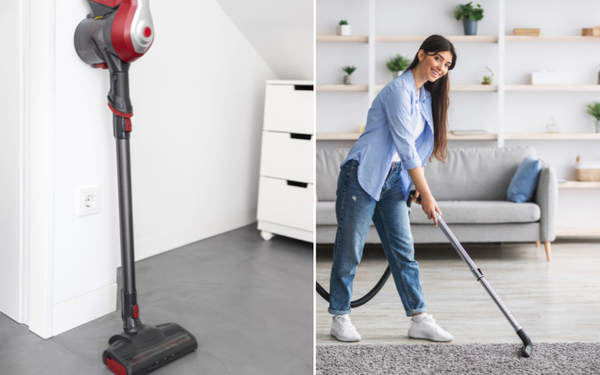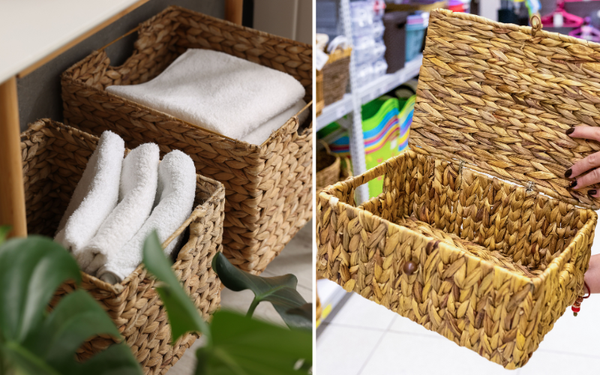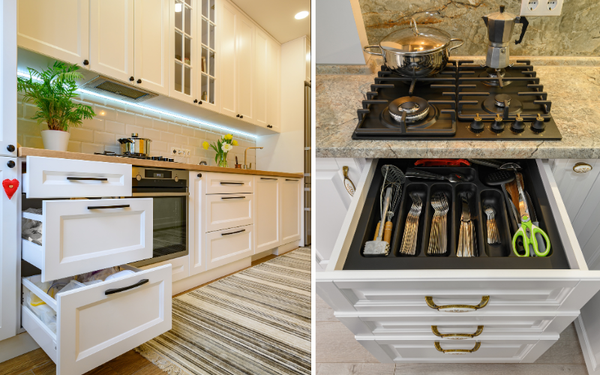What is the strongest material for patio furniture? Durability is key for outdoor furnishings, and this comprehensive guide sheds light on which materials—steel, teak, or synthetic resin—stand as the paragons of strength and resilience. Dive into this essential read to find out which material will best hold up against nature’s test in your backyard.
Key Takeaways
- Steel and aluminum are top choices for metal outdoor furniture due to their durability and weather resistance, with steel being strong but heavier and aluminum being lighter and rust-resistant; both benefit from powder-coating.
- Teak is the premier choice among woods for outdoor furniture due to its natural oil content, resistance to weather, rot, and insects; however, other hardwoods like acacia, cypress, and cedar also offer durable options.
- Synthetic resin wicker, particularly made with HDPE, provides a low-maintenance and durable material for outdoor furniture, outperforming natural rattan in withstanding weather conditions without fading or cracking.
Unlocking the Secrets to Strong Patio Furniture Materials
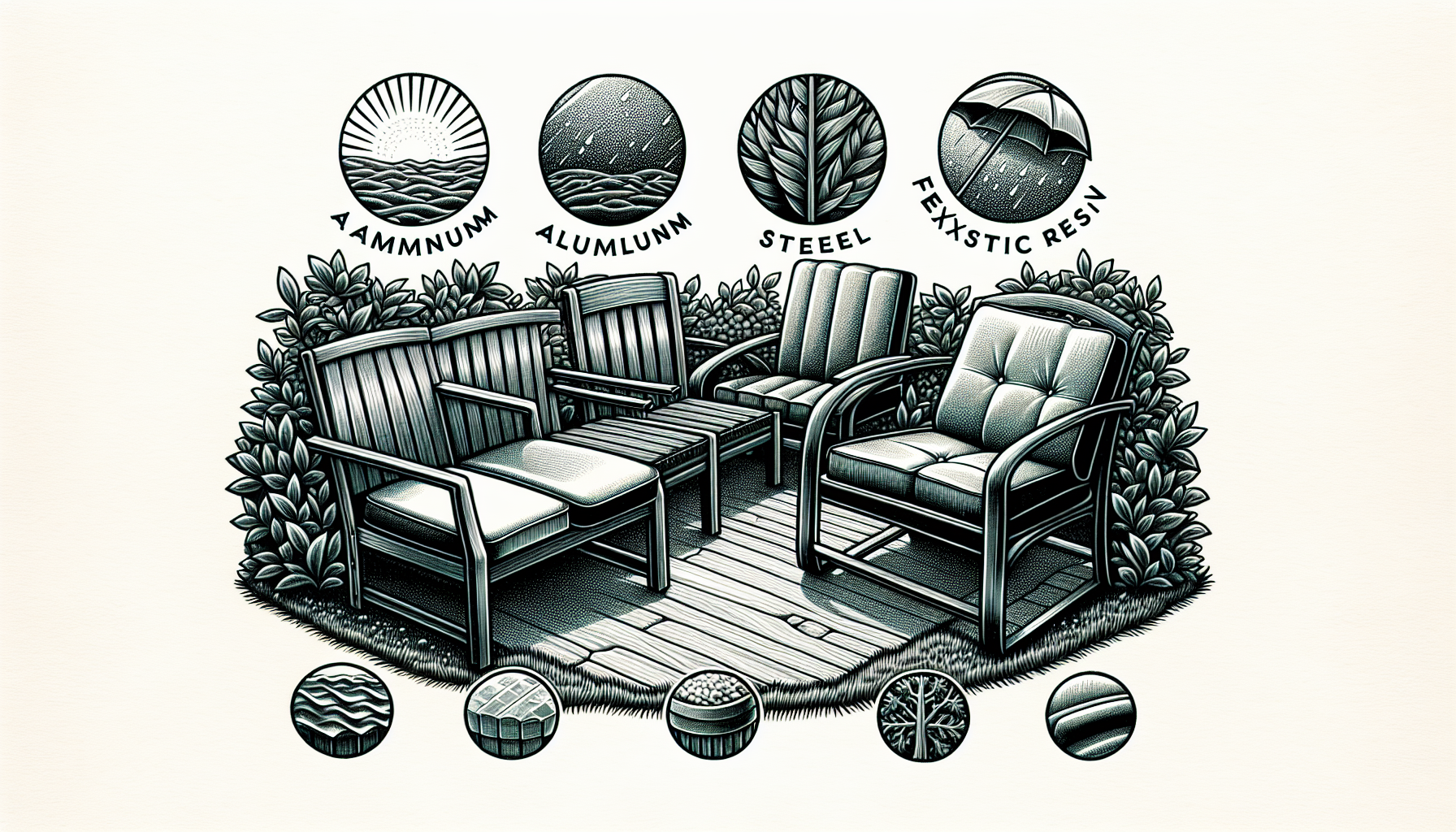
A stunning patio furniture set can transform your outdoor space into a personal haven. But it’s not just about aesthetics. It’s about durability and resistance to environmental elements. So, how do you choose the right material for your outdoor furniture that boasts of classic appeal, timeless style, and durability? Let’s unlock the secrets to durable patio furniture materials and help you make an informed choice.
Metal Mastery: The Strength of Steel and Aluminum
Metals, particularly steel and aluminum, are popular choices for outdoor furniture materials. The strength of steel and the lightweight nature of aluminum make for a potent combination of durability and ease of use. Steel provides substantial strength, making it ideal for patio furniture that needs to withstand various climates and resist dents and high winds. On the other hand, aluminum’s lightweight nature and high resistance to corrosion make it easy to maintain and perfect for any weather.
But it’s not just about strength and weight. Powder coating enhances these metals, improving their weather resistance and aesthetic qualities. Powder-coated steel resists rust, chipping, and corrosion, making it even more resilient. In contrast, aluminum gains an added layer of protection from the weather, retaining its aesthetic appeal for longer.
So, whether it’s a breezy coastal area or a windy hilltop, metal outdoor furniture can stand strong, making your outdoor space all the more inviting.
The Endurance of Engineered Wood
Wood brings a charm like no other. Its natural beauty coupled with immense strength makes it a favored material for outdoor furniture. Among the numerous types of wood, teak stands out for its all-weather capabilities, resistance to rot and insects, and a striking grained finish that adds a touch of elegance to your outdoor space. Its natural oils contribute to its water-repellent properties, ensuring it can withstand exposure to the elements.
While teak is certainly a premium choice, other dense hardwoods like cypress, cedar, and acacia each have their unique properties. Cypress and cedar contain insect- and rot-resistant resins, while acacia is hardy and holds up well against various weather conditions. So, whether you’re going for the timeless appeal of teak or the rustic charm of cedar, engineered wood offers a mix of strength and elegance that can transform your patio into a quaint outdoor retreat.
Synthetic Resin Wicker: A Modern Marvel
For those who desire the classic wicker look without the hassle of high maintenance, synthetic resin wicker is the way to go. Made from polyethylene materials like PE rattan, this modern marvel boasts of superb durability, able to resist various weather conditions without fading or cracking. High-grade materials like High-Density Polyethylene (HDPE) lend it long-lasting durability, ensuring your patio furniture maintains its structural integrity over time.
The beauty of synthetic resin wicker lies not just in its durability, but also in its ease of maintenance. It simplifies upkeep, allowing for easy cleaning and making it a practical choice for outdoor furniture. Whether it’s a sunny poolside or a breezy patio, synthetic resin wicker furniture can withstand the elements, keeping your outdoor space chic and comfortable.
The Battle of Durability: Comparing Furniture Materials
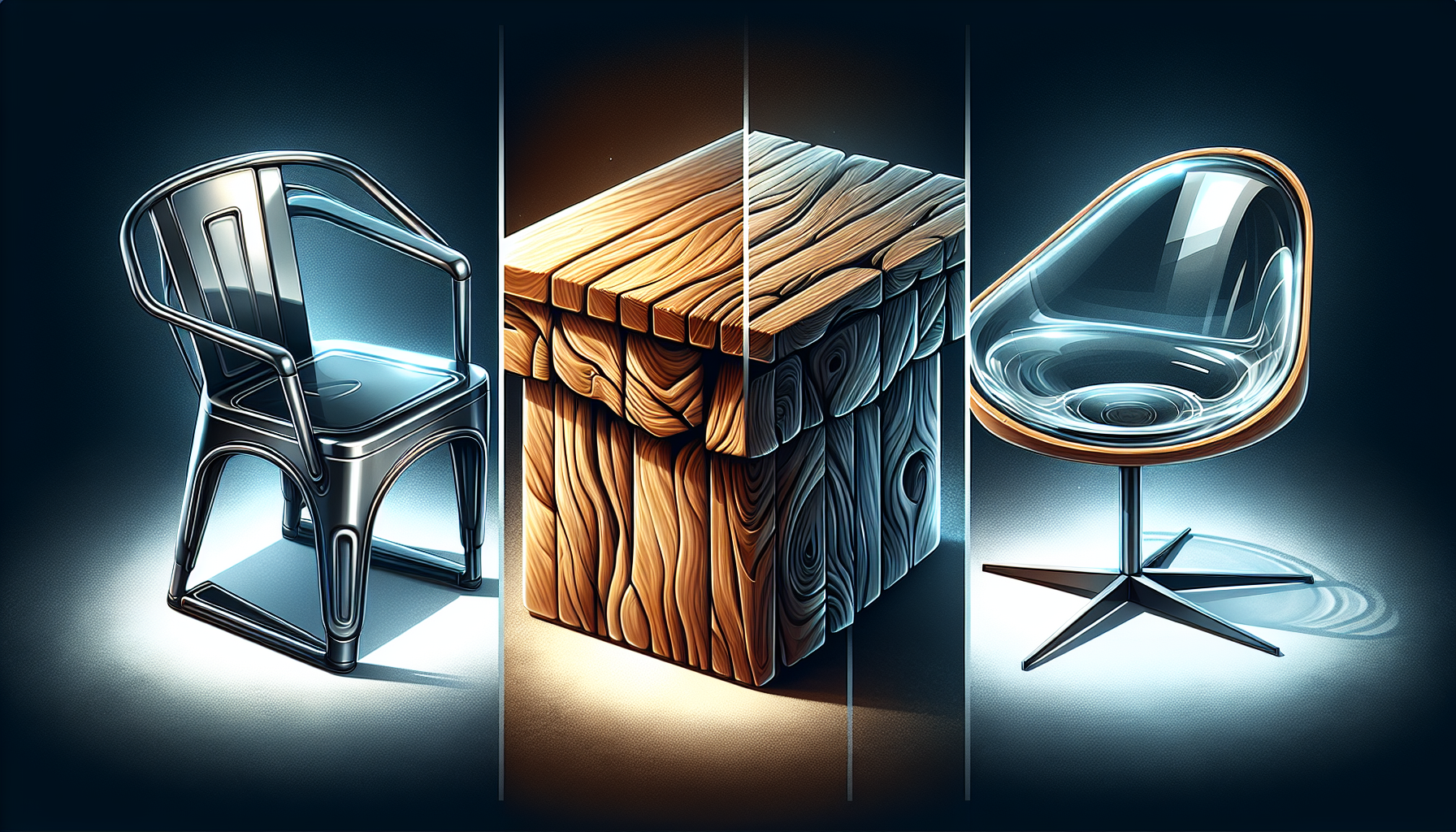
With so many material options and their varied advantages, how do you decide which one is the most durable outdoor furniture material for your space? It’s time to put them head-to-head and see how they fare in the battle of durability. From the weather resistance of metals to the natural appeal of wood, let’s compare and contrast to help you make an informed decision.
Comparing Metals: Aluminum vs. Steel
When it comes to metal outdoor furniture, aluminum and steel are the front runners. Both are sturdy and weather-resistant, but they have their unique strengths and weaknesses. Steel, known for its durability, is resistant to dents and high winds. Its heavier construction provides increased resistance to wear and tear, making it ideal for windy conditions. However, steel furniture may require more care to prevent rust.
Aluminum, on the other hand, is lightweight and highly resistant to corrosion. It requires minimal maintenance, and its light weight allows for easy rearrangement. Perfect for areas with a lot of humidity or rain, aluminum remains rust-resistant, ensuring longevity even in humid environments. So, whether you’re looking for superior strength and wind resistance of steel or the low maintenance and ease of movement of aluminum, both metals offer robust choices for your outdoor furniture.
Hardwood Showdown: Teak vs. Other Woods
When it comes to hardwoods, teak takes the crown. It is preferred for outdoor furniture over other woods due to its natural resistance to elements, strength, and longevity, despite its higher cost and weight. Teak endures various weather conditions, resists pests, and decay thanks to its natural oils, outperforming other hardwoods like acacia in strength and durability.
But beyond durability, teak’s golden brown color and tight grain make it visually attractive, adding to its allure for use in outdoor furniture. On the other hand, other woods like acacia may require more frequent maintenance but offer a unique charm of their own.
So, whether you’re drawn to the durability and aesthetic appeal of teak or prefer the rustic charm of acacia, hardwoods offer both strength and beauty for your patio furniture.
Resin vs. Natural Rattan: Which Lasts Longer?
Natural rattan has always been a favorite for outdoor furniture due to its classic appeal. However, when it comes to durability, synthetic rattan made from high-density polyethylene (HDPE) takes the lead. It offers enhanced durability compared to natural rattan and is resistant to fading, making it an ideal material for outdoor furniture in various climate conditions.
High-Density Polyethylene (HDPE) not only ensures durability but also contributes to the stability of patio furniture to withstand windy conditions, thanks to its density and weight. So, while natural rattan offers a timeless look, synthetic rattan provides the durability to ensure your patio furniture lasts longer, giving you the best of both worlds.
Crafting Your Outdoor Haven with Durable Materials
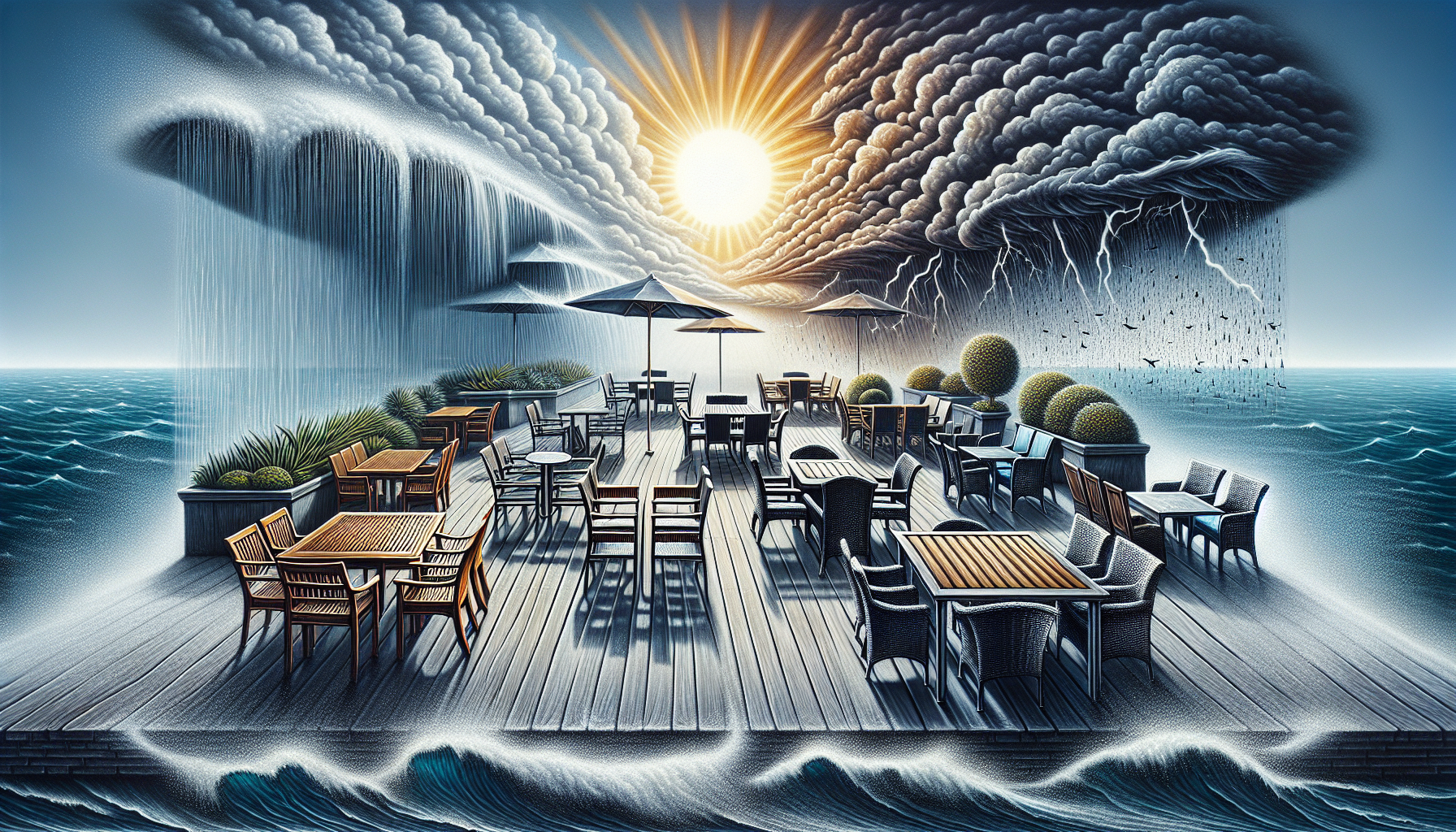
Crafting your outdoor haven goes beyond just picking the right patio furniture. It’s about choosing materials that are durable, suitable for your climate, and resonate with your personal style. Whether it’s rust-resistant materials for coastal areas or heavy-duty options for high winds, let’s delve into how you can select materials that not only enhance your outdoor space but also stand the test of time.
Selecting a Rust Resistant Material for Coastal Areas
Coastal areas with high humidity and saltwater exposure require patio furniture that can stand up to the elements. Rust-resistant materials such as aluminum are ideal for such regions. Its resistance to corrosion ensures longevity even in humid environments, making your outdoor space as inviting as ever.
Aluminum outdoor furniture offers a diverse range of styles and is particularly resistant to rust and corrosion, making it ideal for areas with heavy saltwater exposure and humidity. So, whether you’re setting up a beachfront patio or a cozy balcony overlooking the sea, rust-resistant materials like aluminum can help you create a stunning outdoor space that lasts.
Ensuring Stability in High Winds: Heavy-Duty Options
Living in wind-prone areas requires outdoor furniture that can withstand high winds. Metals like wrought iron or powder-coated steel are recommended for their strength and ability to provide stability. Concrete outdoor furniture is another advantageous choice due to its inherent stability and resistance to being moved by strong winds.
However, lightweight aluminum patio furniture should be avoided unless additional measures are taken to secure it against high winds. So, whether you’re living in a breezy hilltop or a windy coastal area, choosing heavy-duty furniture options can ensure your outdoor space remains intact and inviting no matter the weather.
Embracing Low Maintenance Living
Outdoor living should be about relaxation and enjoyment, not constant maintenance. Popular outdoor furniture materials like recycled plastic and resin offer a low-maintenance option for plastic furniture, while natural materials may require more care. These materials are highly durable, offering resistance to:
- Moisture
- Stains
- Mildew
- Insects To enhance comfort, consider adding outdoor furniture cushions, which can also be made from durable materials.
They require minimal maintenance while also being incredibly durable, staying clear of peeling, cracking, or fading.
High-Density Polyethylene (HDPE) lumber is another customizable material that lends itself to eco-friendly practices, boasting durability that withstands various weather conditions and caters to individual design preferences. So, whether it’s a sunny poolside or a shaded patio, embracing low-maintenance living with durable materials can help you enjoy your outdoor space without the constant worry of upkeep.
The Intersection of Aesthetics and Strength in Patio Design
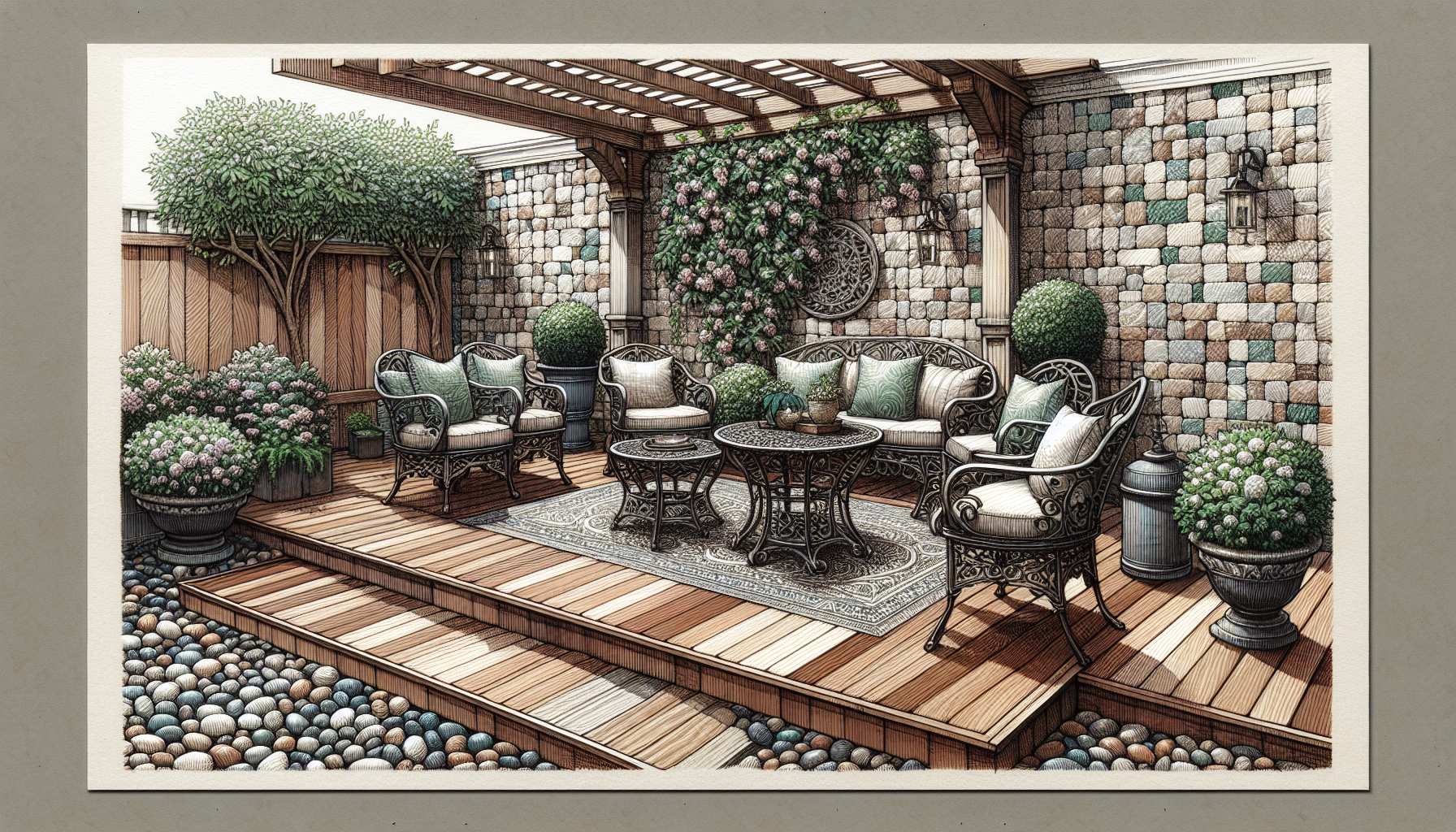
Designing your patio should not be a trade-off between aesthetics and strength. The right materials can offer both. Teak wood, for instance, is known for its durability and low maintenance, but it also delivers on aesthetics, making it a premium choice for outdoor furniture that is both functional and visually appealing. Similarly, aluminum affords outdoor furniture a stylish aesthetic without sacrificing longevity or comfort.
Even synthetic resin materials can provide a combination of sophisticated design and enhanced strength, ensuring your patio furniture is both attractive and durable.
How to Protect and Prolong the Life of Your Strong Patio Furniture
Investing in strong patio furniture is just the first step. To ensure they last long and continue to add beauty to your outdoor space, proper cleaning, maintenance, and storage techniques are crucial. Here are some tips for cleaning and maintaining different types of patio furniture:
- Tempered glass outdoor tables can be cleaned with a damp cloth to maintain their UV and high temperature resistance.
- Acrylic and Nuvella® fabrics are mold- and mildew-resistant and can be cleaned with mild soap and water.
- Stains from acrylic cushion covers can be removed with a soap solution and a soft brush.
- Cotton-blend covers can be handwashed with mild soap.
By following these tips, you can keep your patio furniture looking great for years to come.
Rattan furniture can be cleaned with a soapy water solution applied with a soft cloth, and metal furniture such as steel can be protected from rust with car wax or paint. Unprotected eucalyptus hardwood can be sealed and cleaned with soap and water to prevent moisture damage. All outdoor furniture should be cleaned monthly with a mild soap solution, and any food spills should be wiped promptly to avoid stains and pests. To prevent sun damage, use UV-resistant fabric covers or relocate furniture to shaded areas, and ensure waterlogged cushions are tilted for quick drying.
Before storms, secure outdoor furniture to prevent movement and potential damage. And during off-season periods, store patio furniture indoors when possible or cover it with UV-resistant tarps and apply car wax to metal furniture twice a year after cleaning.
Summary
Choosing the right material for your patio furniture goes beyond aesthetics. It’s about durability, weather resistance, and ease of maintenance. From the strength of steel and aluminum to the natural beauty of teak and the modern marvel of synthetic resin wicker, each material offers unique advantages. Considering factors like your local climate, the specific use of your outdoor space, and your personal style, can help you make the right choice. Remember, the best patio furniture material is one that combines aesthetics, durability, and comfort, making your outdoor space a true extension of your home.
Frequently Asked Questions
Is aluminum or steel better for outdoor furniture?
Aluminum is better for outdoor furniture due to its lightweight, corrosion resistance, and low maintenance requirement, making it ideal for any weather conditions. However, steel offers superior strength and wind resistance, but it requires more care to prevent rust.
Why is teak preferred for outdoor furniture?
Teak is preferred for outdoor furniture due to its natural resistance to elements, strength, and longevity, thanks to its water-repellent properties from natural oils.
Is synthetic rattan more durable than natural rattan?
Yes, synthetic rattan made from high-density polyethylene (HDPE) is more durable than natural rattan and offers resistance to fading, making it suitable for outdoor furniture. Consider synthetic rattan for long-lasting outdoor use.
What are some low-maintenance materials for outdoor furniture?
Recycled plastic and resin are great low-maintenance options for outdoor furniture, as they are highly durable, resistant to moisture, stains, mildew, and insects, and require minimal upkeep.
How can I protect and prolong the life of my patio furniture?
To protect and prolong the life of your patio furniture, make sure to clean it regularly with a mild soap solution, wipe food spills promptly, use UV-resistant fabric covers, secure it before storms, and store it indoors or cover it with UV-resistant tarps during off-season. This will help maintain the furniture's quality and longevity.
You Might Also Like...
